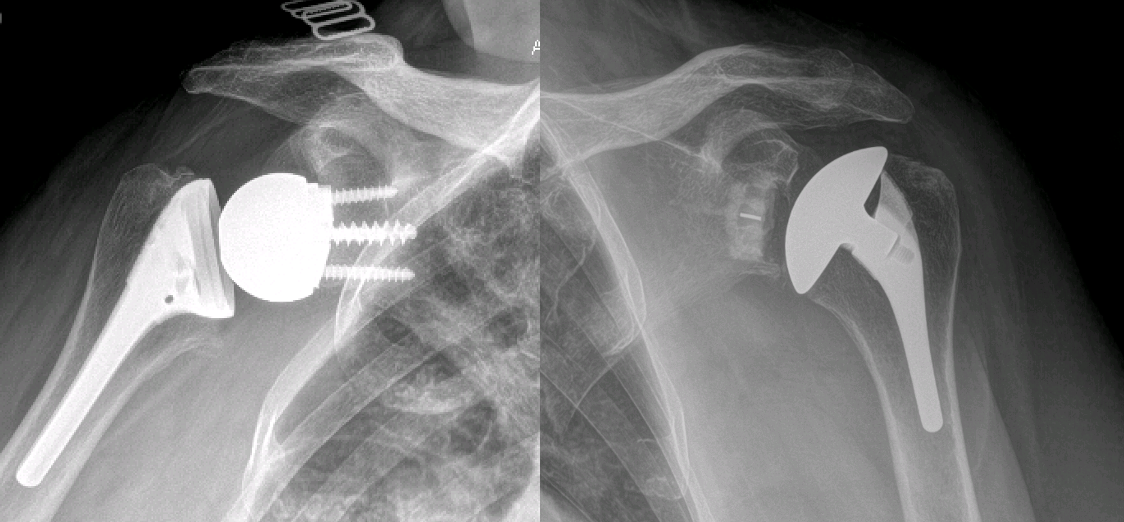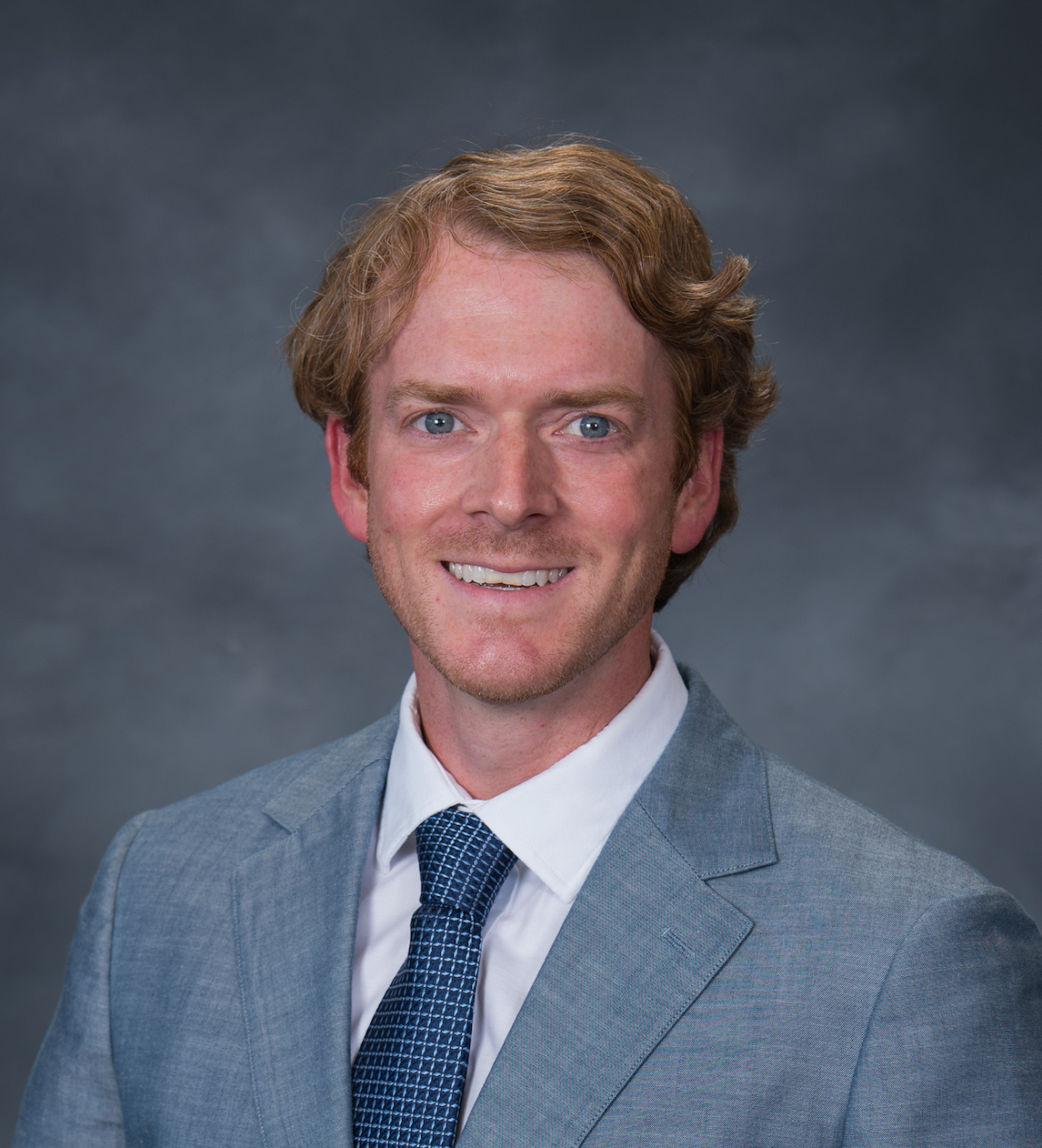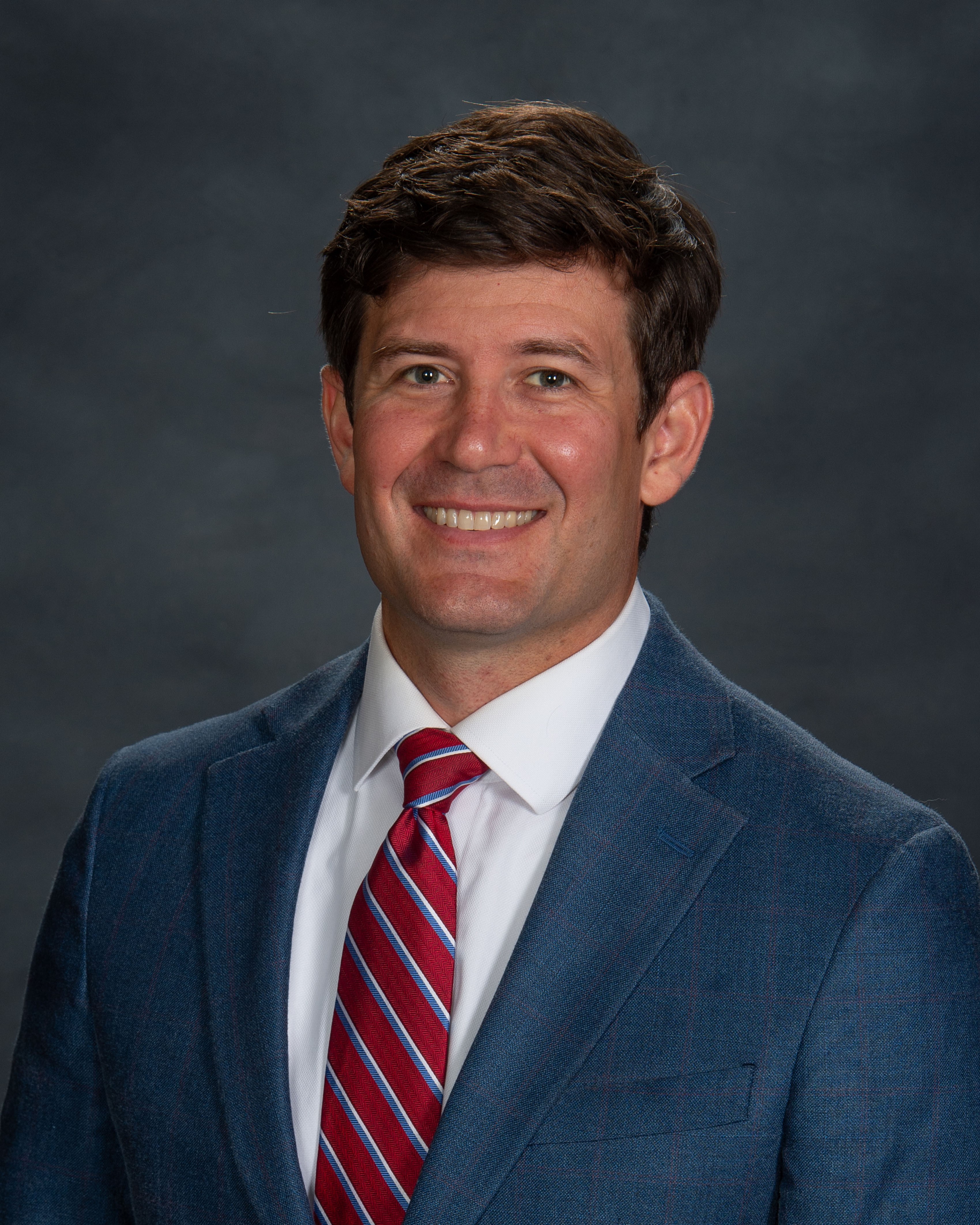Total Shoulder Replacement
Specialties
- Anterior Hip Replacement
- Neck Arthritis (Cervical Spondylosis)
- Endoscopic Carpal Tunnel Release
- Hip Arthroscopy
- Robotic Assisted Knee Replacement
- Robotic Joint Replacement & Spine Surgery
- Rotator Cuff Repair
- Orthopedic Fracture & Trauma Care
- Outpatient Total Knee Replacement
- Partial Knee Replacement
- Radiculopathy (Pinched Nerve) Treatment
- Total Ankle Replacement
- Total Shoulder Replacement
- Hand
- Hip
- Foot & Ankle
- Knee
- Shoulder & Elbow
- Spine
Left X-Ray: Reverse Total Shoulder Replacement
Right X-Ray: Anatomic Total Shoulder Replacement

Though a newer procedure than hip or knee replacement, total shoulder replacement has been just as successful in relieving joint pain for patients with arthritis. During a total shoulder replacement, the damaged surfaces of the shoulder joint are replaced with implants designed to improve shoulder function. This provides great pain relief and better quality of life for many patients.
At Augusta-Aiken Orthopedic Specialists, Dr. Nicholas Capito is Augusta's only private practice shoulder and elbow specialist in Augusta. His passion is shoulder replacement surgery and spends significant time working with engineers, product designers, and software developers to help create the most innovative implants on the market. He performs more shoulder replacements each year than any other surgeon in the CSRA.
https://genesissoftwareinnovations.com/an-interview-with-dr-nick-capito-orthopedic-surgery-specialist/
When is Total Shoulder Replacement Recommended?
Shoulder replacement surgery is typically recommended when patients have severe joint pain in the shoulder that has not improved with nonsurgical treatments like anti-inflammatory medication, injections, and physical therapy.
Osteoarthritis is a common cause of shoulder pain. This degenerative condition wears down the cartilage lining of the joint, and can eventually progress to the point that the bones begin to rub together. In other cases, a large rotator cuff tear may lead to shoulder dysfunction, which can also cause painful degeneration of the joint cartilage. These patients may opt for shoulder replacement surgery to improve shoulder pain and function.
Candidates for total shoulder replacement typically have shoulder pain and weakness that makes even simple activities like reaching overhead or getting dressed very difficult. In some cases, the pain may even persist while at rest, affecting the patient’s ability to get enough sleep. Shoulder replacement surgery can help to eliminate this pain and restore function so that patients can participate in their normal activities.
Shoulder Replacement Procedures
The goal of shoulder replacement surgery is to relieve pain and restore shoulder function. Dr. Capito is trained in both conventional/anatomic total shoulder replacement and reverse total shoulder replacement. After an evaluation, he will recommend the procedure that best fits your needs and provide the best results.
CT ScanDepending on the severity of your arthritis, Dr. Capito may recommend getting a CT scan prior to surgery. He is one of the only surgeons in the area with training on using software programs to preoperatively template and plan for what implants will best fit your anatomy. Just like an architect designing a house prior to being built, Dr. Capito will uniquely design and position which implant will help to best optimize your function after surgery.
Total Shoulder Replacement
Dr. Capito will typically recommend a conventional total shoulder replacement approach if the patient’s rotator cuff is intact.
During total shoulder replacement surgery, the surgeon replaces the damaged surfaces of the shoulder joint with implants that function very much like a natural shoulder joint. The shoulder is a “ball and socket” joint, with the ball-shaped end of the upper arm fitting into the shoulder socket. Likewise, shoulder replacement implants include a metal ball-shaped component and a plastic socket component, which allows the new shoulder joint to glide smoothly with movement.
Reverse Total Shoulder Replacement
If the patient has a severe rotator cuff injury in addition to shoulder arthritis, Dr. Capito will recommend reverse total shoulder replacement. This procedure reverses the mechanics of the shoulder joint to improve shoulder function without having to rely on the damaged rotator cuff for movement.
As with a conventional/anatomic shoulder replacement procedure, he will replace the damaged ball and socket in the shoulder with implants. However, he will reverse the positioning of the implants so that the ball component is attached to the shoulder socket, and the cup-shaped socket component is attached to the upper end of the arm. This allows the shoulder to rely on the deltoid muscle, rather than the rotator cuff, for movement.
Recovering from Shoulder Replacement Surgery
After shoulder replacement surgery, 95% of patients can gone home the same day. Pain medication is provided to help with pain after surgery, but most patients are off pain medication within a week. Most patients find that they have less pain than they did before surgery, even in the initial recovery period.
During the first month of recovery, patients will wear a sling to limit shoulder activity so that the shoulder can heal properly. However, patients are able to write, type, and perform other simple activities during this time. The patient will also be given a set of shoulder exercises to do at home to improve shoulder flexibility and strength. After one month, patients are able to remove the sling and participate in outpatient physical therapy for 6 weeks to 3 months, depending on their individual needs.
After full recovery, most patients do not have long-term restrictions and are able to resume all normal activities. Many of our more active patients have even been able to return to an active lifestyle after recovery. Dr. Capito performs a plastic surgery closure for incisions, so that scarring is minimized. He will discuss any specific recommendations and restrictions with you after surgery, as each patient is different.
Total Shoulder Replacement in Augusta and Aiken
Dr. Nicholas Capito, is our total shoulder replacement specialist at Augusta-Aiken Orthopedic Specialists. If you think shoulder replacement may be right for you and would like to make an appointment with Dr. Capito, please call our Augusta office at 706-863-9797, or submit an appointment request via our website.


